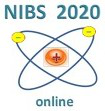Speaker
Description
The Gas Insulated Transmission Line (GITL), which is an important link between radio frequency negative ion source and the power supply system, carries all the Ion Source and the Extraction Power Supplies (ISEPS) conductors at -400kV with respect to ground, from High Voltage Deck (HVD) to the beam source and the intermediate potentials of acceleration grids. The corner section, which is inevitable in the GITL, is easy to discharge if the design is unreasonable, so the insulation design should be considered in the design of the corner section. In this paper three insulation schemes are put forward. Through the finite element analysis, only one scheme meets the design requirements. In this analysis, the relationships between the design parameters (the radius and angle of the corner section) and the design indexes (maximum electric field strength and equivalent distributed capacitance) are analyzed. The preliminary design parameters of the corner section: the radius of the corner section can change from 50 mm to 150 mm and the angle of the corner section is chosen as 90°. In this case, the maximum electric field strength of the GITL decreases from 3.18 kV/mm to 3.06 kV/mm, the maximum electric field strength of the inner surface of the grounding shell decreases from 1.08 kV/mm to 0.73 kV/mm, the electric field non-uniformity coefficient decreases from 2.21 to 2.15 and the equivalent distributed capacitance increases from 82.12 pF to 94.70 pF. The simulation results provide a theoretical basis for the engineering design of the corner section of the GITL.

